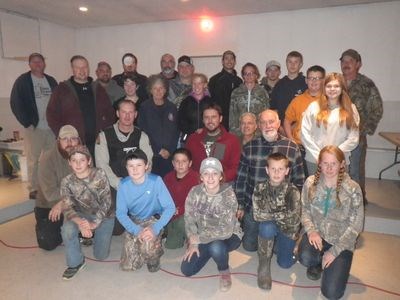A two-day trappers’ course that featured a balance of theory and practical experience was held at Rockford on October 15 and 16.
The course was sponsored by the Saskatchewan Trapper Association.
"It was a great weekend with trappers of all ages enjoying the complete experience,” said Dave Weiman, provincial co-ordinator.
To kick things off, after breakfast served by the Rockford women, past area resident Harold Fenske explained how trapping was an important aspect in his life
In Fenske's revised edition of his book, Riverlore, he discussed the importance of the Elbow on the Assiniboine River.
“The birthplace of Saskatchewan should have been the elbow as it hosted two main forts, Fort Pelly and Fort Livingstone," said Fenske. He also talked about his personal experiences of growing up in the Rockford area and the importance of trapping.
Colin Lawson of the Ministry of Environment at the Yorkton field office also spoke. He discussed trapping, licenses, locations and legal traps used for trapping.
The two-day trappers’ course featured a mix of theory and practical instruction by local and guest instructors. The two days were to have culminated with a humane trapping student exam, which upon passing allows the student to obtain his or her trapping license.
“It is good to see a great attendance,” Weiman said. “People are getting back into trapping, more than ever. They are getting back to nature which is great to see.”
Participants in attendance were from Indian Head, Yorkton, Saskatoon and the local area.
"The main beauty of this premium optional course is the low number of students allowed; just 24 in total,” he said. “The students varied in age level from 12 years to senior. The two-day course allowed students to see the entire picture and they had the opportunity to experience all aspects of trapping from classroom to out in the field. They also had the opportunity to skin a coyote, muskrat, mink, beaver and raccoon."



